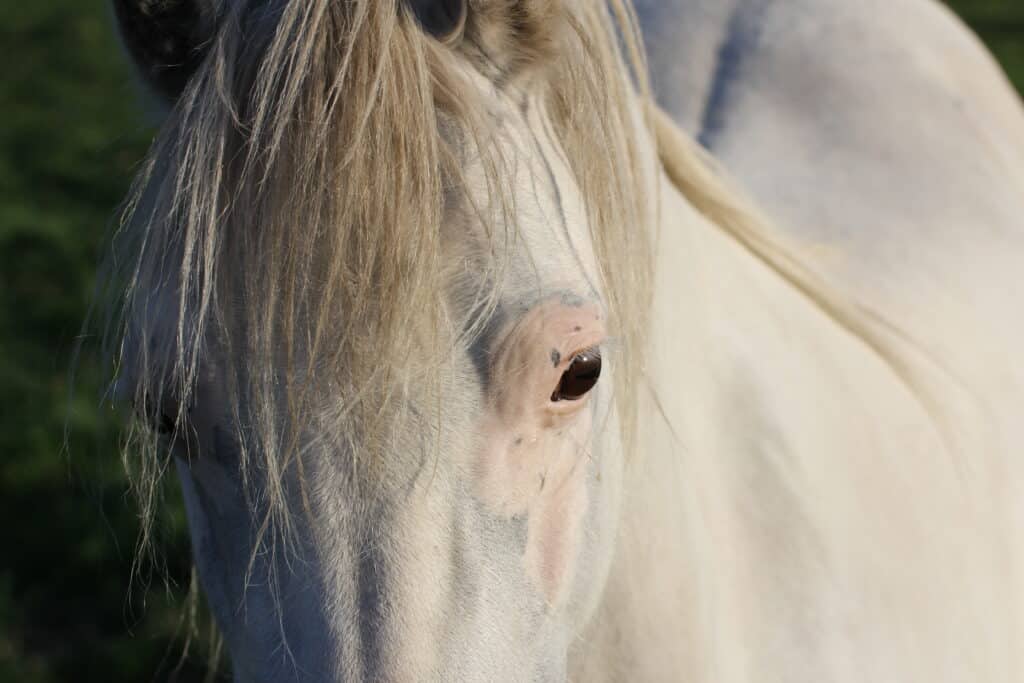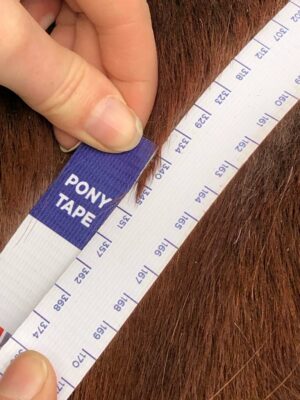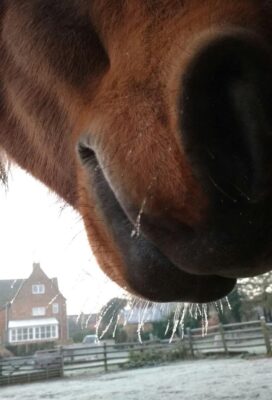Daily Management, Diseases & Conditions, Featured, Hoof Care, Lameness, Nutrition
Laminitis – recognise the risk factors
Briony Witherow, explains why early recognition and careful management of all risk factors are key to achieving a good recovery or better still, preventing a laminitic episode
It is never too early to be looking at how we can adapt our management strategies to keep our horses healthy as the seasons change – being able to recognise the risk factors and early warning signs of laminitis is key to an improved outcome or better yet, avoiding an episode altogether.

What is laminitis?
Laminitis is a systemic condition that manifests in the foot, resulting in pain and lameness. It involves a failure of the lamellae that attach the pedal bone of the foot to the inner hoof wall. The laminae have many blood vessels which are necessary for various functions including thermoregulation, transport of oxygen and nutrients to the foot, and removal of waste products from the foot. This decreased structural integrity, or destruction of the laminae, is thought to result in a lack of blood supply to the affected area, which disables these functions. This in turn causes inflammation of the sensitive laminae. Damage to the sensitive laminae in the hoof leaves the pedal bone with very little support as a result the pedal bone can drop or rotate within the hoof wall. In the most serious cases, the pedal bone can penetrate through the sole of the horse’s foot. How the disease develops and the mechanisms which are involved in its development are not yet fully understood, however, when it comes to prevention, being aware of common symptoms and factors that are thought to increase the risk, is a good place to start.
Symptoms
Recent research has highlighted that while there are certain clinical signs that seem to be consistently reported in cases of laminitis, no individual owner-reported signs were present in every case¹⁰ . This emphasises the importance of awareness of a range of symptoms, and most crucially, knowing what is normal for your horse.
Key owner-reported clinical signs are as follows:⁹,¹⁴
- difficulty turning
- a short, stilted, or lame walk
- reluctance to walk
- shifting weight
Key risk factors
History of laminitis
A clinical history of laminitis is well-reported as being a key risk factor when it comes to future bouts. Studies on recurrence of laminitis suggest that between 30-70% of horses that have one bout of laminitis, go on to experience a second¹,²,⁷,¹¹,¹³ . This strengthens the requirement for a thorough knowledge of the horse’s clinical history and the need for continued vigilance and management.
Metabolic issues
It is thought that endocrinopathic laminitis – laminitis triggered by an underlying metabolic challenge – is perhaps the most common form of laminitis, with research suggesting nine out of ten cases share this clinical basis²,³,⁴,⁵,⁸,¹². As such, identification of underlying issues, acknowledgement of the associated risk and practical adjustments in management will no doubt play a role in prevention.
 Recent weight gain
Recent weight gain
Weight gain and laminitis appear to go hand in hand, and this has been confirmed by several recent studies⁹,¹⁴ which reported that weight gain within the previous three months as assessed by the owner, saw a four-fold increase in the risk of laminitis. This suggests that while weight gain alone is a risk factor in its own right, a period of rapid weight gain may pose further risk.
Change in forage
While it is well-established that changing a horse’s diet should be gradual for both bucket feed and forage, this has been highlighted as a risk factor when it comes to laminitis. Grass availability changes within the previous two to four weeks, along with being turned out on high-quality grass, have both been identified as significant risk factors⁶ and therefore, likely to be directly associated with the risk of recent weight gain. It is vital to understand that a change in forage and increased pasture availability are experienced by many horses as we enter spring, so it is essential to take extra precautions during this time.
Managing grazing
The ‘binge eating’ factor
Research has identified associations between pasture access and laminitis risk, suggesting risk increases for those spending short periods of time on grass in the morning, less time stabled, and the use of grazing muzzles for only part of the grazing time⁹. This may indicate possible ‘binge eating’ behaviours observed when access to pasture is only for a short time and, potentially following a period of forage restriction (running out while stabled overnight). It is well-documented that horses and ponies can adapt to fewer hours turnout by adjusting their consumption rate, so consuming larger quantities in less time. The idea of compensatory grazing is also why increased risk may be seen where grazing muzzles are used ‘part-time’; where restriction is applied whether that be through stabling or, the use of a grazing muzzle alongside free access to pasture. This may well encourage ‘binge’ type grazing, making restriction periods ineffective.
Turnout timing and area – is this relevant?
 A ‘protective’ factor was identified, where risk appeared reduced for those turned out on pasture bordered by woodland. This is in-line with recommendations to reduce sugar intake by turning out in shaded areas or, on days that are overcast; the theory being that grass under these conditions accumulates fewer sugars. In addition to managing where horses are turned out, the timing of when horses are turned out can also help to manage risk. So, awareness of the conditions that promote sugar accumulation in the grass is key.
A ‘protective’ factor was identified, where risk appeared reduced for those turned out on pasture bordered by woodland. This is in-line with recommendations to reduce sugar intake by turning out in shaded areas or, on days that are overcast; the theory being that grass under these conditions accumulates fewer sugars. In addition to managing where horses are turned out, the timing of when horses are turned out can also help to manage risk. So, awareness of the conditions that promote sugar accumulation in the grass is key.
When the right environmental conditions allow, sugar levels in the grass will rise during the day (sugars accumulate as a product of photosynthesis) peaking late afternoon, and decreasing once the sun sets. The plant then uses these sugars overnight for growth, and as such, levels tend to be at their lowest first thing in the morning (typically 3am to 10am). However, where grass has undergone ‘stress’ e.g., drought or a night frost, this process of converting sugar to fibre cannot occur, meaning the grass may still be high in sugar come the morning. In these conditions the plant is unable to use the sugars for growth, which can lead to accumulation.
Such conditions occur where night-time temperatures drop below 5°C and during the winter months, immediately after a hard frost or, when grass is snow covered. These risks are increased further when colder nights are coupled with bright sunny days. In the transition between winter and spring these conditions are commonplace, meaning a good understanding and awareness of what is happening in the grass is vital to making sensible management decisions.
Height and breed
Laminitis rightly or wrongly has always been synonymous with native types and ponies; however, recent research has argued that this simplistic approach may be to blame for cases in non-typical types being missed or, treatment being delayed¹⁰. While there is evidence to suggest that height and breed independently of one another and in combination, can be used to predict risk ⁶,⁹,¹³,¹⁴, it is clear that an over-reliance on these factors in isolation could result in incorrect management and, perhaps facilitate the idea of ‘perceived protectiion’.
Managing the risk: take home messages
- Monitor weight and condition for any animals identified as at risk⁴ ⁹
- Be aware of recent (and likely unintentional) weight gain.
- Do not dismiss the risk of laminitis based on factors such as breed and height alone.
- Know what is normal for your horse as this can be crucial when identifying early warning signs.
- Be aware while there are some common symptoms and signs, these may vary between horses.
- Be aware of clinical history and acknowledge that previous laminitis (whatever the perceived cause) will likely increase future risk.
- Be cautious of changing turnout availability, particularly if this means an increase in the quantity and quality available.
- Increase grazing time gradually and consider forage restriction methods ( eg strip grazing, the use of muzzles etc.) perhaps earlier in the year than you might normally.
- Consider turnout timing and whether the turnout area can be adapted to promote conditions where sugars may not accumulate as readily and, be mindful of compensatory (binge) grazing.
References
- De Laat, M.A., Reiche, D.B., Sillence, M.N., and McGree, J.M. (2019a) Incidence and risk factors for recurrence of endocrinopathic laminitis in horses. Journal of Veterinary Internal Medicine, 33 (3): 1473-1482
- De Laat, M.A., Sillence, M.N., and Reiche, D.B. (2019b) Phenotypic, hormonal and clinical characteristics of equine endocrinopathic laminitis, Journal of Veterinary Internal Medicine, 33 (3): 1456-1463
- Donaldson, M.T., Jorgensen, A.J., Beech, J. (2004) Evaluation of suspected pituitary pars intermedia dysfunction in horses with laminitis. Journal of the American Veterinary Medical Association, 224: 1123-1127
- Durham, A.E., Frank, N., McGowan, C.M., Menzies-Gow, N.J., Roelfsema, E., Vervuert, I., Feige, K., and Fey, K. (2019) ECEIM consensus statement on equine metabolic syndrome. Journal of Veterinary Internal Medicine, 33:335–349.
- Karikoski, N.P., Horn, I., McGowan, T.W. (2011) The prevalence of endocrinopathic laminitis among horses presented for laminitis at a first opinion/referral equine hospital. Domestic Animal Endocrinology, 41: 111-117
- Luthersson, N., Mannfalk, M., Parkin, T. D.H., and Harris, P. (2017) Laminitis: Risk factors and outcome in a Group of Danish Horses. Journal of Equine Veterinary Science, 53: 68-73
- Menzies-Gow, N.J., Stevens, K., Barr, A., Camm, I., Pfeiffer, D., and Marr, C.M. (2013) Severity and outcome of equine pasture-associated laminitis managed in first opinion practice in the UK. The Veterinary Record, 167 (10): 364-369
- Patterson-Kane, J.C., Karikoski, N.P., McGowan, C.M. (2018) Paradigm shifts in understanding equine laminitis. The Veterinary Journal, 231: 33-40
- Pollard, D., Wylie, C.E., Verheyen, K.L.P., and Newton, J.R. (2019) Identification of modifiable factors associated with owner-reported equine laminitis in Britain using a web-based cohort study approach. BMC Veterinary Research
- Pollard, D., Wylie, C.E., Verheyen, K.L.P., and Newton, J.R. (2017) Assessment of horse owners’ ability to recognise equine laminitis: A cross-sectional study of 93 veterinary diagnosed cases in Great Britain. Equine Veterinary Journal, 49: 759-766
- Potter, S.J., Bamford, N.J., Harris, P.A., Bailey, S.R. (2017) Incidence of laminitis and survey of dietary and management practices in pleasure horse and ponies in south-eastern Australia. Australian Veterinary Journal, 95 (10): 370-374
- Van Eps, A.W., and Burns, T.A. (2019) Are there shared mechanisms in the pathophysiology of different clinical forms of laminitis and what are the implications for prevention and treatment? Veterinary Clinics of North America: Equine Practice, 35 (2): 379-398
- Welsh, C.E., Duz, M., Parkin, T.D.H., and Marshall, J.F. (2017) Disease and pharmacologic risk factors for first and subsequent episodes of equine laminitis: A cohort study of free-text electronic medical records. Preventive Veterinary Medicine, 136: 11-18
- Wylie, C.E., Collins, S.N., Verheyen, K.L.P., and Newton, J.R. (2013) Risk factors for equine laminitis: A case-control study conducted in veterinary-registered horses and ponies in Great Britain between 2009 and 2011. The Veterinary Journal, 198: 57-69
